Opinion & Analysis
Face the facts in putting: Controlling face angle
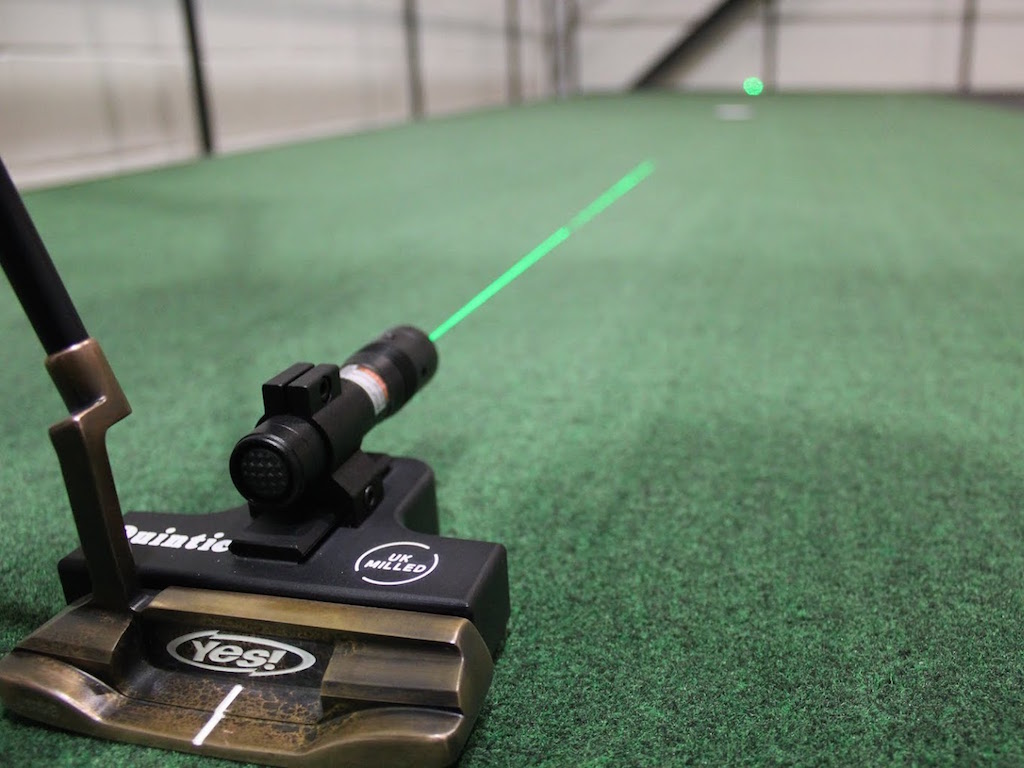
Controlling face angle in putting is a tenacious task. The top players in the world even struggle with this on a daily basis. What about conventional golfers? Can controlling face angle really improve one’s ability to put the ball in the hole?
The short answer is yes, but there are many influencing factors: the style of the putter (face-balanced, plumber-neck, heel-shafted, center-shafted), head weight, posture, alignment, lie and loft, etc. All are factors that can aid a player in controlling face angle, for better or worse!
The purpose of this article is to inform golfers why this is crucial, what to look for when rolling putts and looking for a new putter, and how they can get better.
Note: Through this entire article, we are assuming centered contact with ball and putter head (center mass to center mass). Heel and toe strikes have minimal effect on the direction the ball rolls.
The main purpose of having a square face at impact is to start the ball on your intended start line, but that’s much easier said than done. As the loft on the club gets lower, the more influence face angle has on the direction a ball starts to move or roll. For example, with a 6 iron with a loft of approximately 28 degrees, face angle at impact has a 75 percent effect on the direction the ball launches. The other 25 percent is path. As the loft on the club decreases (i.e. a driver), gear effect aside, face angle has an 85 percent effect. With a putter with a loft of 2 degrees, the influence is greater than 90 percent. This is massive!
A putter face that is open 2 degrees at impact will miss the hole from 5 feet! For a putt to go in at 8 feet, the angle of the face needs to less than 1 degree open or closed to the target. Increase the distance to 15 feet and the putter face needs to less than 0.5 degrees open or closed to the target for the putt to go in. Can you tell the difference between a face angle that is 1-degree closed or open to your target line?
Consider the above statistics. Now consider the PGA Tour average of putts made from inside 5 feet, from 10 feet, and from greater than 10 feet. From the beginning of the 2014/2015 season until now (3.20.2015), here are the best putters from those distances according to PGATour.com.
- Inside 5 feet: Vaughn Taylor — 99.25 percent
- From 10 feet: Jerry Kelly — 71.43 percent
- From greater than 10 feet: John Daly — 22.94 percent
Notice the drop from 10 feet to greater than 10 feet — it’s 48 percent! Remember, a face that is open by 1 degree will miss the hole from 8 feet. This is evidence that face angle outside of 10 feet is unyielding. Outside of 10 feet, most amateur players should focus on getting the proper speed for the putt, but inside 10 feet is where the magic happens. Controlling face angle is what the best players in the world do best.
When selecting a new putter, the style of the putter needs to compliment the style of stroke a player has. That’s why identifying what type of stroke you have is critical.
There are three generalized styles of putting stroke.
- Straight back, straight through: The putter moves in a straight line away from the ball and straight through the ball.
- Minimum Arc: There’s a slight arc to the path of the putter head with minimal face rotation.
- Lots of arc and face rotation: The putter head moves with a noticeable arc and plenty of face rotation.
Golfers who have an arc to their stroke with more face rotation usually prefer or fit into toe-weighted or heel-shafted putters. This gives them more control over face angle at impact.
Golfers with less arc and face rotation generally fit into a plumber’s neck model putter. These putters generally suit strokes with minimal arc and face rotation.
Golfers who like the feel of a “straight-back, straight-through” stroke tend to favor a face-balanced putter. This is a generalized comment, because sometimes different putters feel and perform better to these golfers. Ultimately, the putter should feel comfortable and very natural throughout the stroke. It should also feel very easy to line up to the target.
Checking alignment can be tough to do without a laser or other types of calibrating tools. Typically, most golfers think they are lined up properly, but are not. Using a laser that can sit flush with the putter face is the most accurate way to test this.
Below is an example of how a laser can help identify face angle at address. If your face angle is not square to your target or start line, something would have to change somewhere through the stroke to get the face to square up.
- Face pointed the the right of the target
- Face pointed at the target
- Face pointed to the left of the target
I know some of you are thinking, “What about Billy Mayfair?” Mayfair cut every single putt he made and missed! His face angle was very open at impact during his prime. What he did very well was match his putter’s path to his face angle, so his path, which only has a 10 percent influence, complimented what direction his face was aligned. At Modern Golf, we would never encourage a player to emulate this style of putting. It is too difficult to repeat and adds a ton of cut spin to the roll of the ball. But if a golfer comes to us with this tendency and putts well, there is often no reason for him to change.
One way to work solely of the face angle of your putter at impact is to eliminate path as a variable. Using a putting arc, or a 2×4 piece of wood to run the heel of the putter along to eliminate any path deviation will isolate face angle, but this is only really applicable to short putts. At some point, there should be some arc in a golfer’s stroke.
If you are looking for a quick way to lower your putts on the course, isolate face angle. Work on putts inside 10 feet. These are the ones that have the highest percentage of going in regardless of outside variables. It takes commitment and some extra tools, but it’s one of the quickest way to lower your handicap.
Related
- Part 1: Why everyone can benefit from Quintic
- Part 2: The key to putter fitting? Know your roll
- Part 3: Face the facts in putting — Controlling face angle
- LIKE107
- LEGIT25
- WOW19
- LOL4
- IDHT1
- FLOP2
- OB1
- SHANK9
19th Hole
Vincenzi’s LIV Golf Singapore betting preview: Course specialist ready to thrive once again

After another strong showing in Australia, LIV Golf will head to Sentosa Golf Club in Singapore looking to build off of what was undoubtedly their best event to date.
Sentosa Golf Club sits on the southern tip of Singapore and is one of the most beautiful courses in the world. The course is more than just incredible scenically; it was also rated 55th in Golf Digest’s top-100 courses in 2022-2023 and has been consistently regarded as one of the best courses in Asia. Prior to being part of the LIV rotation, the course hosted the Singapore Open every year since 2005.
Sentosa Golf Club is a par 71 measuring 7,406 yards. The course will require precise ball striking and some length off the tee. It’s possible to go low due to the pristine conditions, but there are also plenty of hazards and difficult spots on the course that can bring double bogey into play in a hurry. The Bermudagrass greens are perfectly manicured, and the course has spent millions on the sub-air system to keep the greens rolling fast. I spoke to Asian Tour player, Travis Smyth, who described the greens as “the best [he’s] ever played.”
Davis Love III, who competed in a Singapore Open in 2019, also gushed over the condition of the golf course.
“I love the greens. They are fabulous,” the 21-time PGA Tour winner said.
Love III also spoke about other aspects of the golf course.
“The greens are great; the fairways are perfect. It is a wonderful course, and it’s tricky off the tee.”
“It’s a long golf course, and you get some long iron shots. It takes somebody hitting it great to hit every green even though they are big.”
As Love III said, the course can be difficult off the tee due to the length of the course and the trouble looming around every corner. It will take a terrific ball striking week to win at Sentosa Golf Club.
In his pre-tournament press conference last season, Phil Mickelson echoed many of the same sentiments.
“To play Sentosa effectively, you’re going to have a lot of shots from 160 to 210, a lot of full 6-, 7-, 8-iron shots, and you need to hit those really well and you need to drive the ball well.”
Golfers who excel from tee to green and can dial in their longer irons will have a massive advantage this week.
Stat Leaders at LIV Golf Adelaide:
Fairways Hit
1.) Louis Oosthuizen
2.) Anirban Lahiri
3.) Jon Rahm
4.) Brendan Steele
5.) Cameron Tringale
Greens in Regulation
1.) Brooks Koepka
2.) Brendan Steele
3.) Dean Burmester
4.) Cameron Tringale
5.) Anirban Lahiri
Birdies Made
1.) Brendan Steele
2.) Dean Burmester
3.) Thomas Pieters
4.) Patrick Reed
5.) Carlos Ortiz
LIV Golf Individual Standings:
1.) Joaquin Niemann
2.) Jon Rahm
3.) Dean Burmester
4.) Louis Oosthuizen
5.) Abraham Ancer
LIV Golf Team Standings:
1.) Crushers
2.) Legion XIII
3.) Torque
4.) Stinger GC
5.) Ripper GC
LIV Golf Singapore Picks
Sergio Garcia +3000 (DraftKings)
Sergio Garcia is no stranger to Sentosa Golf Club. The Spaniard won the Singapore Open in 2018 by five strokes and lost in a playoff at LIV Singapore last year to scorching hot Talor Gooch. Looking at the course setup, it’s no surprise that a player like Sergio has played incredible golf here. He’s long off the tee and is one of the better long iron players in the world when he’s in form. Garcia is also statistically a much better putter on Bermudagrass than he is on other putting surfaces. He’s putt extremely well on Sentosa’s incredibly pure green complexes.
This season, Garcia has two runner-up finishes, both of them being playoff losses. Both El Camaleon and Doral are courses he’s had success at in his career. The Spaniard is a player who plays well at his tracks, and Sentosa is one of them. I believe Sergio will get himself in the mix this week. Hopefully the third time is a charm in Singapore.
Paul Casey +3300 (FanDuel)
Paul Casey is in the midst of one of his best seasons in the five years or so. The results recently have been up and down, but he’s shown that when he’s on a golf course that suits his game, he’s amongst the contenders.
This season, Casey has finishes of T5 (LIV Las Vegas), T2 (LIV Hong Kong), and a 6th at the Singapore Classic on the DP World Tour. At his best, the Englishman is one of the best long iron players in the world, which makes him a strong fit for Sentosa. Despite being in poor form last season, he was able to fire a Sunday 63, which shows he can low here at the course.
It’s been three years since Casey has won a tournament (Omega Dubai Desert Classic in 2021), but he’s been one of the top players on LIV this season and I think he can get it done at some point this season.
Mito Pereira +5000 (Bet365)
Since Mito Pereira’s unfortunate demise at the 2022 PGA Championship, he’s been extremely inconsistent. However, over the past few months, the Chilean has played well on the International Series as well as his most recent LIV start. Mito finished 8th at LIV Adelaide, which was his best LIV finish this season.
Last year, Pereira finished 5th at LIV Singapore, shooting fantastic rounds of 67-66-66. It makes sense why Mito would like Sentosa, as preeminent ball strikers tend to rise to the challenge of the golf course. He’s a great long iron player who is long and straight off the tee.
Mito has some experience playing in Asia and is one of the most talented players on LIV who’s yet to get in the winner’s circle. I have questions about whether or not he can come through once in contention, but if he gets there, I’m happy to roll the dice.
Andy Ogletree +15000 (DraftKings)
Andy Ogletree is a player I expected to have a strong 2024 but struggled early in his first full season on LIV. After failing to crack the top-25 in any LIV event this year, the former U.S. Amateur champion finally figured things out, finished in a tie for 3rd at LIV Adelaide.
Ogletree should be incredible comfortable playing in Singapore. He won the International Series Qatar last year and finished T3 at the International Series Singapore. The 26-year-old was arguably the best player on the Asian Tour in 2023 and has been fantastic in the continent over the past 18 months.
If Ogletree has indeed found form, he looks to be an amazing value at triple-digit odds.
- LIKE3
- LEGIT3
- WOW1
- LOL2
- IDHT0
- FLOP2
- OB0
- SHANK0
Opinion & Analysis
Ryan: Lessons from the worst golf instructor in America

In Tampa, there is a golf course that boasts carts that do not work, a water range, and a group of players none of which have any chance to break 80. The course is overseen by a staff of crusty men who have succeeded at nothing in life but ending up at the worst-run course in America. However, this place is no failure. With several other local courses going out of business — and boasting outstanding greens — the place is booked full.
While I came for the great greens, I stayed to watch our resident instructor; a poor-tempered, method teacher who caters to the hopeless. At first, it was simply hilarious. However, after months of listening and watching, something clicked. I realized I had a front-row seat to the worst golf instructor in America.
Here are some of my key takeaways.
Method Teacher
It is widely accepted that there are three types of golf instructors: system teachers, non-system teachers, and method teachers. Method teachers prescribe the same antidote for each student based on a preamble which teachers can learn in a couple day certification.
Method teaching allows anyone to be certified. This process caters to the lowest caliber instructor, creating the illusion of competency. This empowers these underqualified instructors with the moniker of “certified” to prey on the innocent and uninformed.
The Cult of Stack and Jilt
The Stack and Tilt website proudly boasts, “A golfer swings his hands inward in the backswing as opposed to straight back to 1) create power, similar to a field goal kicker moving his leg in an arc and 2) to promote a swing that is in-to-out, which produces a draw (and eliminates a slice).”
Now, let me tell you something, there is this law of the universe which says “energy can either be created or destroyed,” so either these guys are defying physics or they have no idea what they are taking about. Further, the idea that the first move of the backswing determines impact is conjecture with a splash of utter fantasy.
These are the pontifications of a method — a set of prescriptions applied to everyone with the hope of some success through the placebo effect. It is one thing for a naive student to believe, for a golf instructor to drink and then dispel this Kool-Aid is malpractice.
Fooled by Randomness
In flipping a coin, or even a March Madness bet, there is a 50-50 chance of success. In golf, especially for new players, results are asymmetric. Simply put: Anything can happen. The problem is that when bad instructors work with high handicappers, each and every shot gets its own diagnosis and prescription. Soon the student is overwhelmed.
Now here’s the sinister thing: The overwhelming information is by design. In this case, the coach is not trying to make you better, they are trying to make you reliant on them for information. A quasi Stockholm syndrome of codependency.
Practice
One of the most important scientists of the 20th century was Ivan Pavlov. As you might recall, he found that animals, including humans, could be conditioned into biological responses. In golf, the idea of practice has made millions of hackers salivate that they are one lesson or practice session from “the secret.”
Sunk Cost
The idea for the worst golf instructor is to create control and dependency so that clients ignore the sunk cost of not getting better. Instead, they are held hostage by the idea that they are one lesson or tip away from unlocking their potential.
Cliches
Cliches have the effect of terminating thoughts. However, they are the weapon of choice for this instructor. Add some hyperbole and students actually get no information. As a result, these players couldn’t play golf. When they did, they had no real scheme. With no idea what they are doing, they would descend into a spiral of no idea what to do, bad results, lower confidence, and running back to the lesson tee from more cliches.
The fact is that poor instruction is about conditioning players to become reliant members of your cult. To take away autonomy. To use practice as a form of control. To sell more golf lessons not by making people better but through the guise that without the teacher, the student can never reach their full potential. All under the umbrella of being “certified” (in a 2-day course!) and a melee of cliches.
This of course is not just happening at my muni but is a systemic problem around the country and around the world, the consequences of which are giving people a great reason to stop playing golf. But hey, at least it’s selling a lot of golf balls…
- LIKE18
- LEGIT2
- WOW0
- LOL4
- IDHT1
- FLOP4
- OB1
- SHANK24
19th Hole
Vincenzi’s 2024 Zurich Classic of New Orleans betting preview

The PGA TOUR heads to New Orleans to play the 2023 Zurich Classic of New Orleans. In a welcome change from the usual stroke play, the Zurich Classic is a team event. On Thursday and Saturday, the teams play best ball, and on Friday and Sunday the teams play alternate shot.
TPC Louisiana is a par 72 that measures 7,425 yards. The course features some short par 4s and plenty of water and bunkers, which makes for a lot of exciting risk/reward scenarios for competitors. Pete Dye designed the course in 2004 specifically for the Zurich Classic, although the event didn’t make its debut until 2007 because of Hurricane Katrina.
Coming off of the Masters and a signature event in consecutive weeks, the field this week is a step down, and understandably so. Many of the world’s top players will be using this time to rest after a busy stretch.
However, there are some interesting teams this season with some stars making surprise appearances in the team event. Some notable teams include Patrick Cantlay and Xander Schauffele, Rory McIlroy and Shane Lowry, Collin Morikawa and Kurt Kitayama, Will Zalatoris and Sahith Theegala as well as a few Canadian teams, Nick Taylor and Adam Hadwin and Taylor Pendrith and Corey Conners.
Past Winners at TPC Louisiana
- 2023: Riley/Hardy (-30)
- 2022: Cantlay/Schauffele (-29)
- 2021: Leishman/Smith (-20)
- 2019: Palmer/Rahm (-26)
- 2018: Horschel/Piercy (-22)
- 2017: Blixt/Smith (-27)
2024 Zurich Classic of New Orleans Picks
Tom Hoge/Maverick McNealy +2500 (DraftKings)
Tom Hoge is coming off of a solid T18 finish at the RBC Heritage and finished T13 at last year’s Zurich Classic alongside Harris English.
This season, Hoge is having one of his best years on Tour in terms of Strokes Gained: Approach. In his last 24 rounds, the only player to top him on the category is Scottie Scheffler. Hoge has been solid on Pete Dye designs, ranking 28th in the field over his past 36 rounds.
McNealy is also having a solid season. He’s finished T6 at the Waste Management Phoenix Open and T9 at the PLAYERS Championship. He recently started working with world renowned swing coach, Butch Harmon, and its seemingly paid dividends in 2024.
Keith Mitchell/Joel Dahmen +4000 (DraftKings)
Keith Mitchell is having a fantastic season, finishing in the top-20 of five of his past seven starts on Tour. Most recently, Mitchell finished T14 at the Valero Texas Open and gained a whopping 6.0 strokes off the tee. He finished 6th at last year’s Zurich Classic.
Joel Dahmen is having a resurgent year and has been dialed in with his irons. He also has a T11 finish at the PLAYERS Championship at TPC Sawgrass which is another Pete Dye track. With Mitchell’s length and Dahmen’s ability to put it close with his short irons, the Mitchell/Dahmen combination will be dangerous this week.
Taylor Moore/Matt NeSmith +6500 (DraftKings)
Taylor Moore has quickly developed into one of the more consistent players on Tour. He’s finished in the top-20 in three of his past four starts, including a very impressive showing at The Masters, finishing T20. He’s also finished T4 at this event in consecutive seasons alongside Matt NeSmith.
NeSmith isn’t having a great 2024, but has seemed to elevate his game in this format. He finished T26 at Pete Dye’s TPC Sawgrass, which gives the 30-year-old something to build off of. NeSmith is also a great putter on Bermudagrass, which could help elevate Moore’s ball striking prowess.
- LIKE8
- LEGIT3
- WOW1
- LOL1
- IDHT0
- FLOP3
- OB1
- SHANK2
-

 19th Hole2 weeks ago
19th Hole2 weeks agoJustin Thomas on the equipment choice of Scottie Scheffler that he thinks is ‘weird’
-

 19th Hole2 weeks ago
19th Hole2 weeks ago‘Absolutely crazy’ – Major champ lays into Patrick Cantlay over his decision on final hole of RBC Heritage
-

 19th Hole3 weeks ago
19th Hole3 weeks agoReport: LIV Golf identifies latest star name they hope to sign to breakaway tour
-

 19th Hole3 weeks ago
19th Hole3 weeks agoNeal Shipley presser ends in awkward fashion after reporter claims Tiger handed him note on 8th fairway
-

 19th Hole3 weeks ago
19th Hole3 weeks agoBrandel Chamblee has ‘no doubt’ who started the McIlroy/LIV rumor and why
-

 19th Hole1 week ago
19th Hole1 week agoLET pro gives detailed financial breakdown of first week on tour…and the net result may shock you
-

 Equipment3 weeks ago
Equipment3 weeks agoJason Day on his recent switch into Srixon ZX5 and ZX7 Mk II irons
-

 19th Hole5 days ago
19th Hole5 days agoGary Player claims this is what ‘completely ruined’ Tiger Woods’ career

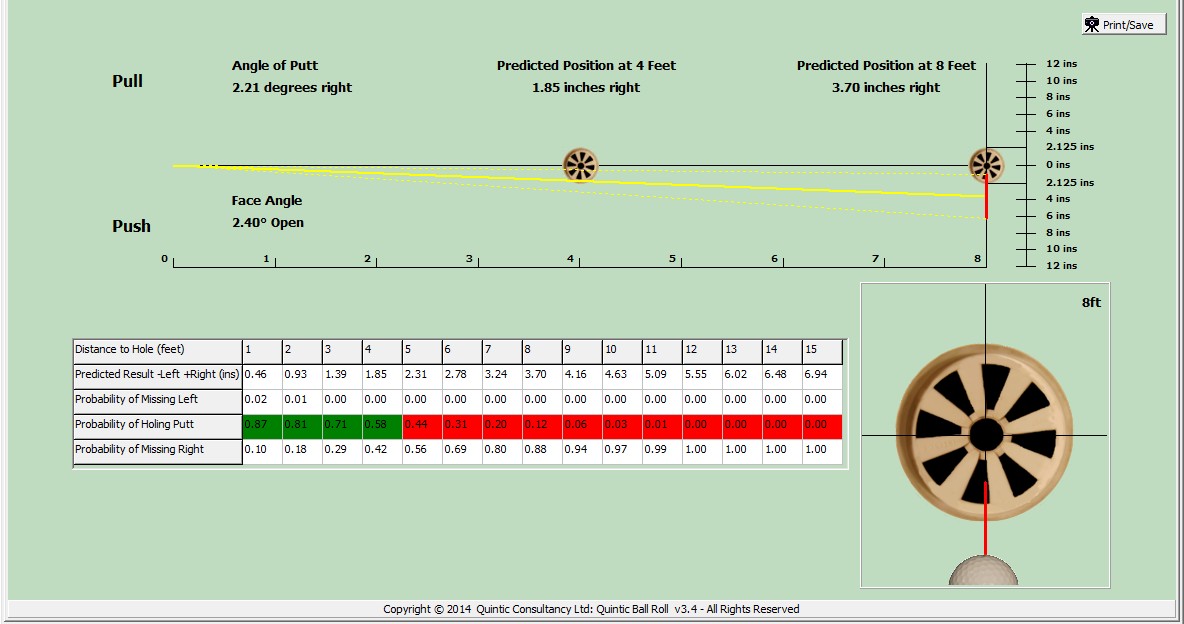
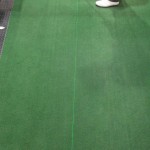
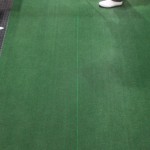
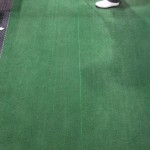
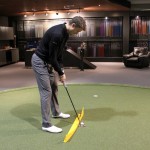
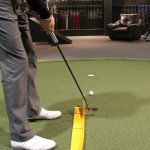









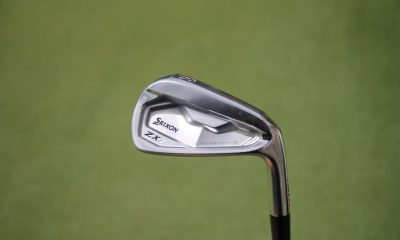







Pingback: How to Improve Your Putting
Samual Puttington
Apr 1, 2015 at 6:35 pm
HEY MODERN GOLF, what are the stats for people returning the face at impact to what they had at address? Pretty low, right? So then why so concerned with adjusting the address position to have a face pointed directly at the target when very few will return the putter face to that angle? Fir for stroke. Edel has it wrong.
Modern Golf Staff
Apr 2, 2015 at 7:08 pm
It’s all about creating consistency. It’s important to see where the alignment issue is (aligned left or right of target) and getting the player to feel and see the difference. If we can create a more consistent face angle at impact the player will develop more feel for distance and line.
AJ Jensen
Apr 1, 2015 at 4:22 pm
Good article for sure. The main takeaway for me though is the idea that my driver is more sensitive to face angle than are the weaker clubs. This explains all the times I’ve KNOWN my driver’s swing path was correct at-and-after ball impact, yet my shot quickly took off on a lateral arc to the left or right
lef
Apr 1, 2015 at 11:27 am
Lie angle is critical in the discussion and not brought up here. The amount of arc in the putting stroke is strong dictated by lie angle. When you set a putter down flat it tells you its natural arc. This is why It’s virtually impossible to truly putt straight back and straight through because putters don’t have a zero degree lie angle. I’ve been playing a face balanced centershafted putter for a decade with a moderately arcing stroke due to its lie. When I use a heal shafted toe heavy putter with the same lie angle and shaft length and weight I feel almost no difference. But if I use any style of putter with a different lie angle I immediately adopt the natural arc of that putter. If you want to feel the face closing find a putter with a longish shaft and a shallow lie. Its a much stronger effect than toe weight in my opinion.
Brutus
Apr 1, 2015 at 11:25 am
It has been shown that without a doubt a putter path cannot move straight back and thru without the handle moving back linearly and maintaining it’s exact relative location to the head (i.e. hovering right over it as it slides back, speed of movement, etc…) Any variance between the 2 immediately introduces 2 arcs on 2 planes. Arc 1 as it lifts up the lowest point to the ground at address while swinging back. Even if it comes up a 1/2″, that’s an arc. And arc 2 as it swings inside (or outside) a straight path back. This is created as the putter head moves farther and faster than the handle and has to arc in the process. An analysis of Nicklaus’ stroke as he used to hunch way over and piston like pump his putt was close to straight back and through but still produced those 2 arcs inevitably.
I bought that yellow swing path trainer your set of pictures show. It’s from Butch Harmon who developed Tiger into a putting force using this method in the early 2000’s. (See putting tips from Jim Flick and Butch in Golf Digest articles from 9/09 and 5/13 issues as they describe the Inside and Down the Line technique Butch teaches and this aid develops). I rarely think a new training device will give me 10% more driving distance or whatever, but I know practicing with this increased me putting from inside 10 feet to the tune of 3 to 4 less putts a round. I saw it in my scores and handicap improvement.
Phil
Mar 31, 2015 at 5:02 pm
I am a heavily left eye dominant, right handed golfer. I constantly fight aiming too far right of target as my eyes are telling me I am aiming too far left. This results in me A trusting it and putting a good stroke on or B pushing the putt cos after the back swing my brain forces me to push the ball where my eyes think it should be going. I have been trying to use a ping ketsch with slight arc but am continually missing right. A return to my yes Morgan (Napa) type blade fixes this but I really want the ketsch to work as so much more forgiving…
Mike
Apr 1, 2015 at 12:37 pm
Try a putter with less offset (center shafted to 1/2). If you are like me (left eye dominate playing right handed golf), I aim better with a center shafted or at most a 1/2 offset putter. When I grab a 3/4 to full offset putter I aim too far to the left of target.
talljohn777
Apr 1, 2015 at 1:38 pm
I have had the same issue. Put a line on your ball, get behind your intended line and using both your eyes binocularly place the ball on your intended line with the line on the ball matching up with your intended line of putt, then step into your putt with the putter lining up with the line on your ball, now your putter is correctly aimed on your intended line, stroke the ball, make the putt.
Rick Wright
Mar 31, 2015 at 4:40 pm
LASER OPTICS is actually the original putter alignment laser. My patented technology (US only) has been around for over 15 years. In 2013, I upgraded to a high power green laser, which can be seen prominently outdoors. I further changed the design allowing for the instructor/user to trace the aim line on the putting surface. This change allows assessment of alignment on straight or breaking putts from any length. Hurrion approached me at the 2014 PGA Show with the desire to have me develop an alignment laser specifically for the Quintic Ball Roll System. After prototypes were provided I never heard from him again. Although, I see he didn’t bother to change the shape of the laser base. Oh well, that’s the golf industry for you.
M
Mar 31, 2015 at 3:02 pm
Modern Golf – What if you have natural aiming tendencies due to eye dominance, etc? Wouldn’t changing a person to aim directly at the hole (if they are slightly off) cause their eyes and proprioception to send conflicting messages? How many professional golfers actual aim within the hole at 10 feet or more?
Modern Golf Staff
Apr 2, 2015 at 6:52 pm
This is not a what if, everyone has a dominant eye and tendencies due to this. The key is to find a putter that is easier to line up. Right eye dominant players have an easier time lining up putters with left offset. Also, they tend to have an open stance to their target to see the line better. using a laser will help identify what direction the alignment is off.
Golf professionals struggle with this as well. They are human! The difference is they know their tendencies and have a good feel for alignment. outside of 10 feet the best putters in the world are making just over 20% of their putts.
Paul
Mar 31, 2015 at 12:56 pm
I use a plumbers neck ping anser style putter. I have a slight arc.
I often feel like I have to grip the putter firmly to stop the face closing over, which produces pulls if I leave it to go. Should I be using a face balanced putter?
M
Mar 31, 2015 at 2:59 pm
No you should be using a putter with more arc to allow the face to open more on the backswing. Then you won’t feel like you have to stop the putter from releasing.
Try a Shea H or a Zing and see if it feels like you can release the putter more freely.
Rick Wright
Mar 31, 2015 at 5:43 pm
A putter does not create arc, the golfer does. With a couple of friends/colleagues I have developed the math which will plot an individual’s signature path based upon set up, posture, and relationship to ball position. If the golfer’s path does not match the projected path (usually due to preconceived notions), there is manipulation. The brain can typically manage small degrees of manipulation, but greater degrees can result in accuracy, impact, and ultimately, distance control issues.
talljohn777
Apr 1, 2015 at 1:43 pm
And why are you not sharing the information with the rest of the golf world???
Tiger Hoods
Apr 1, 2015 at 6:37 pm
Every putter has a rotational value that is engineered into the design. If that value doesn’t fit the rotational requirement of the golfer the golfer will feel off. I learned that from a great instructor at puttertalk.com
Modern Golf Staff
Apr 2, 2015 at 6:25 pm
Interesting Rick! We would love to chat more regarding the applied math. Maybe this is something we can implement here at Modern Golf.
Stretch
Apr 4, 2015 at 11:17 am
Nicely stated Rick. The manipulation is what leads to yippy strokes. The root cause of the manipulation is having the eyes aligned differently to the intended line the ball needs to roll on.